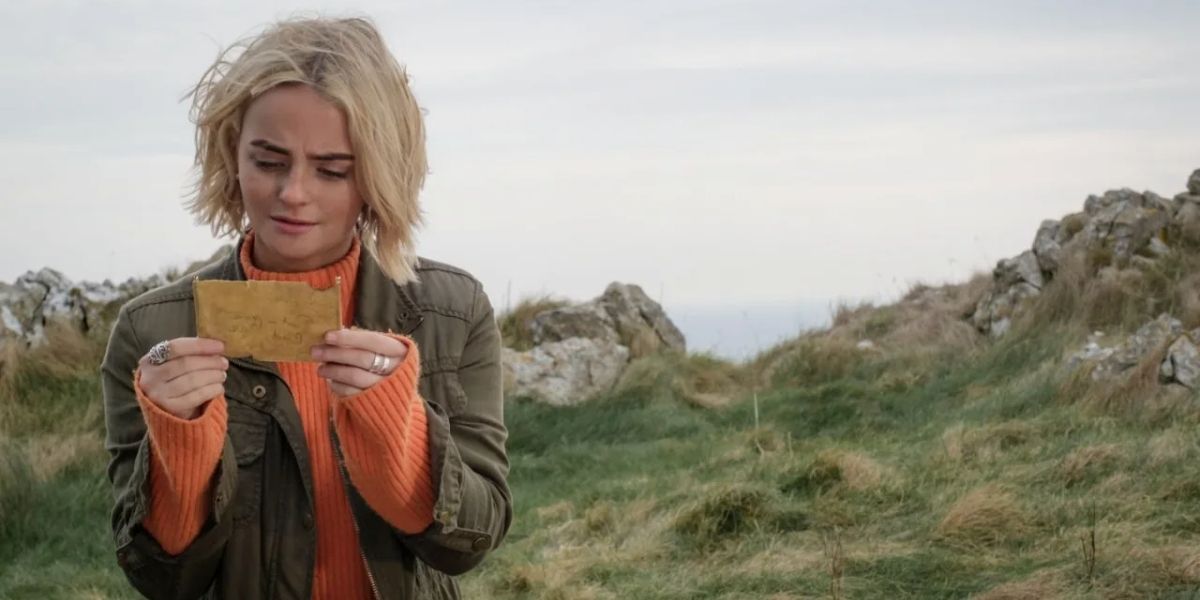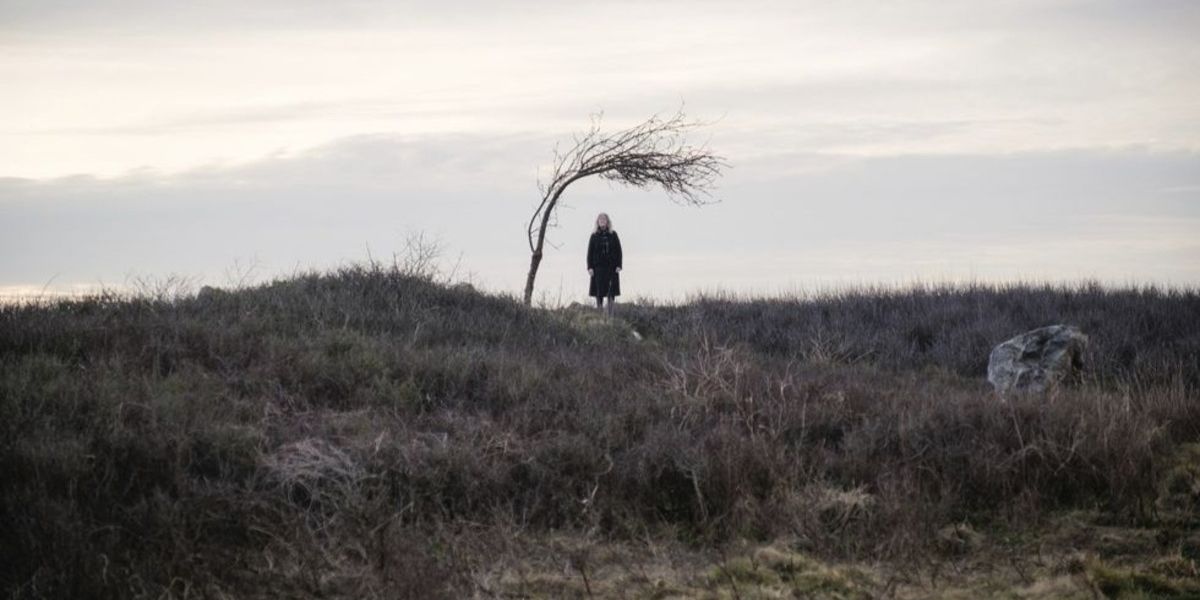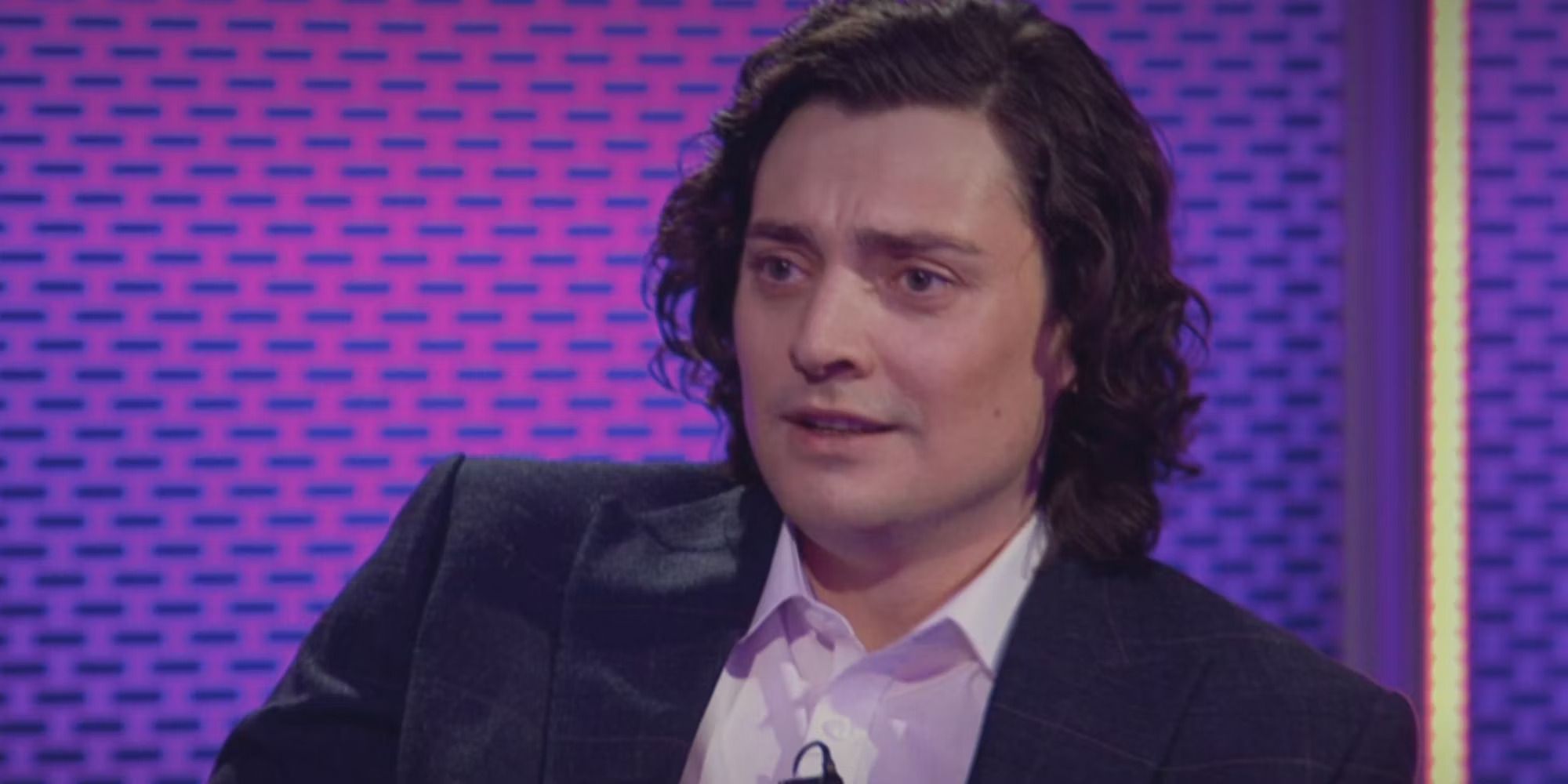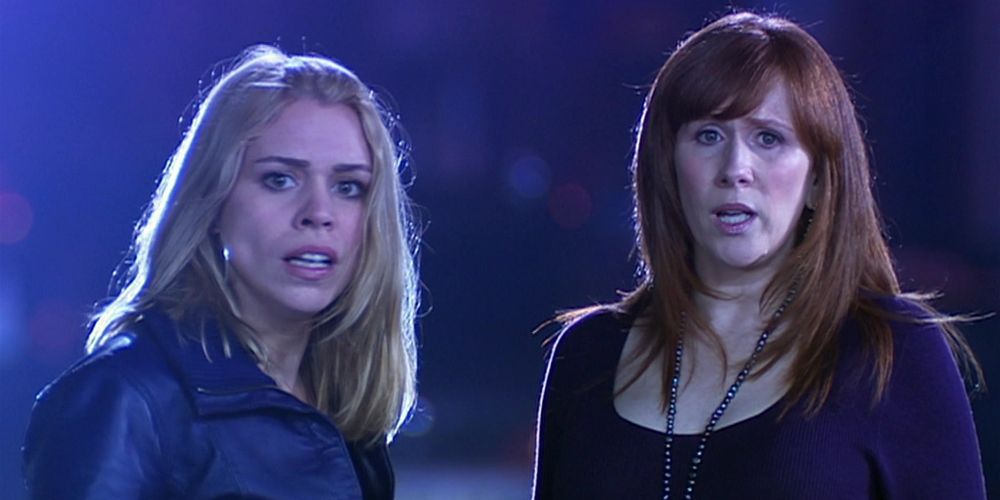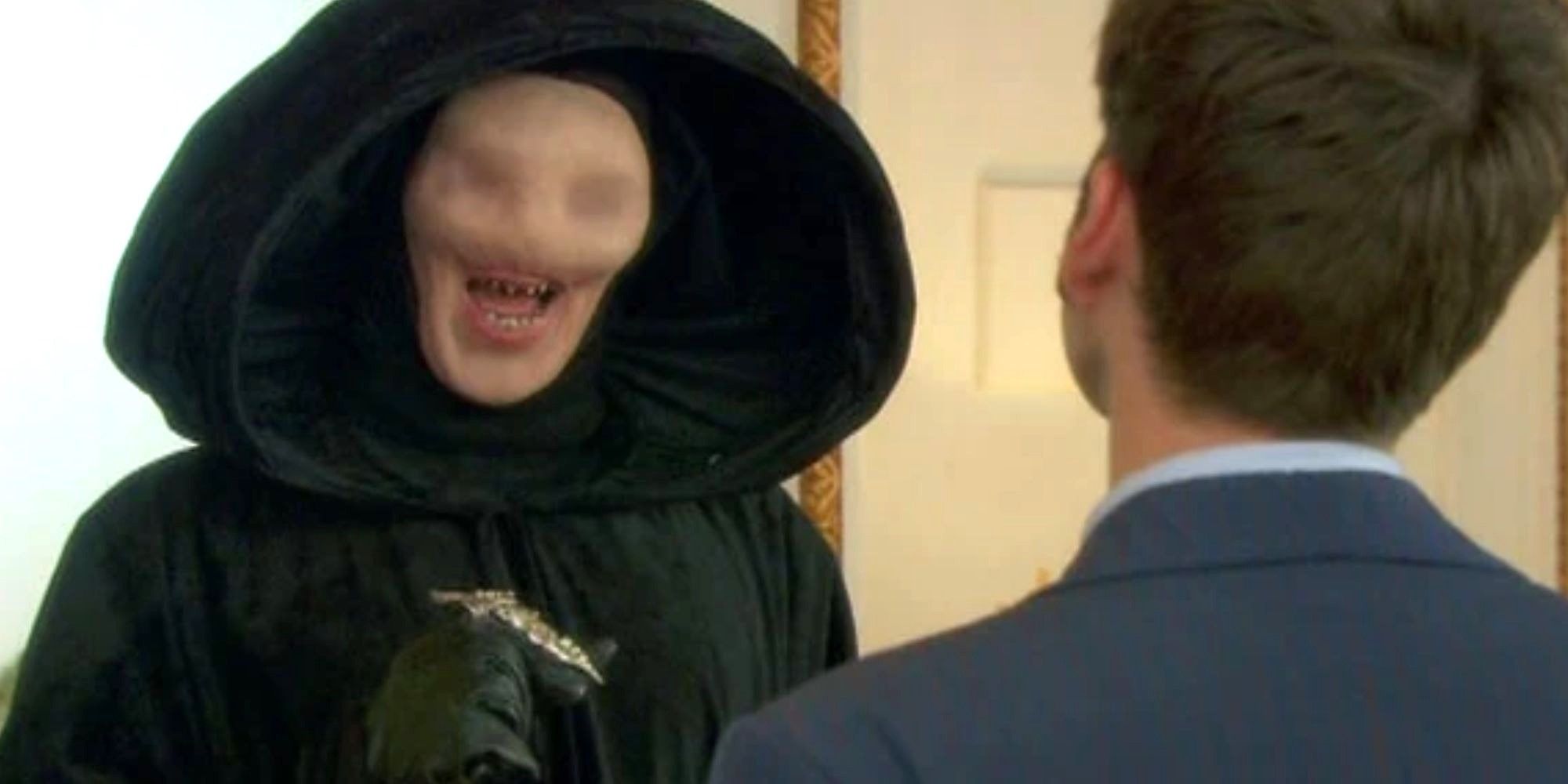“73 Yards” is one of Doctor Who’s most intriguing and mystifying episodes to date, thrusting Ruby Sunday into an eerie world of folk horror.

Doctor Who has always embraced the strange and the mysterious. Season 1, Episode 4, “73 Yards,” is perhaps the greatest expression of that the sci-fi series has ever achieved. The episode takes Millie Gibson’s Ruby Sunday on a trip into an alternate timeline without the Doctor (Ncuti Gatwa), as she is stalked by a strange and foreboding stranger — a woman who is always exactly 73 yards away. The episode offers little explanation for its unusual goings-on, leaving viewers with a conclusion that poses as many questions as it answers. Of all of Doctor Who‘s recent excursions into the supernatural and inexplicable, “73 Yards” may well be the most mystifying.
Penned by Doctor Who showrunner Russell T Davies, much of the time-bending plot of “73 Yards” seems to tie into the broader story being built around Ruby Sunday. However, it is not clear how much of this episode will be revisited in the future and how much will remain a mystery for fans to ponder. Recent episodes have jumped between all manner of different worlds and tones and “73 Yards” is its most shocking genre shift yet. The episode even eschews the Doctor Who opening titles, setting itself apart from the rest of the series to tell a Ruby Sunday story rooted in folklore.
Stepping Into a Fairy Circle Is the Newest Superstition Doctor Who Explores
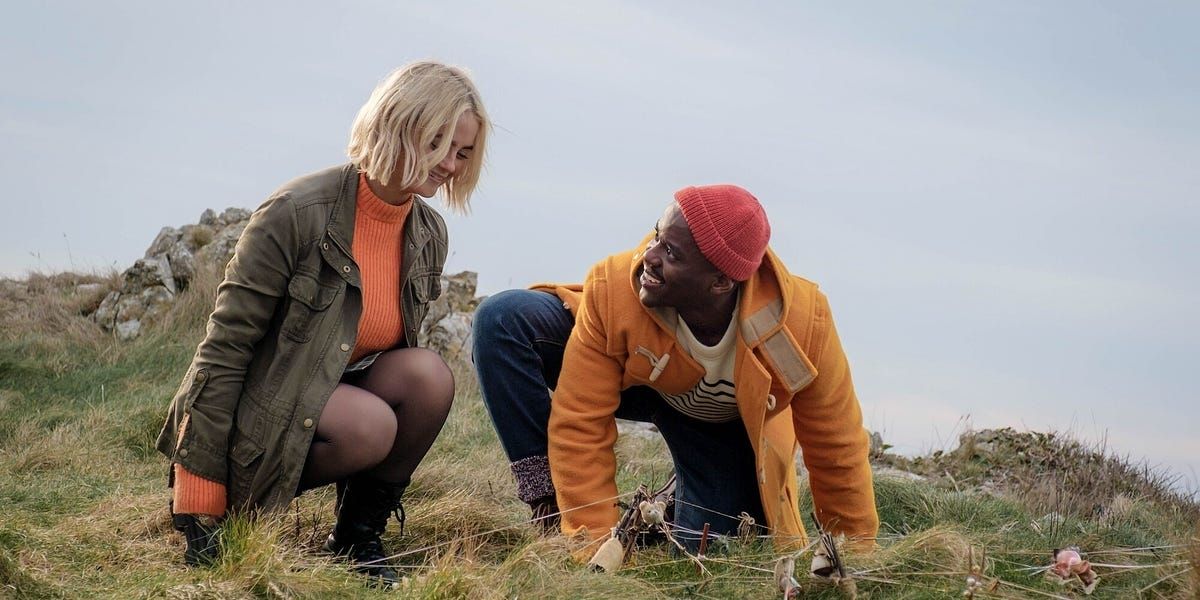
In the opening scene of “73 Yards,” the Doctor and Ruby step out of the TARDIS to find themselves on a clifftop in Wales. As they wander out across the clifftop, the Doctor steps on a strange circle made of cotton, charms, flowers, bird skulls and scrolls, breaking it as he does so. This makes “73 Yards” the second episode in a row to feature the Doctor stepping on something he shouldn’t, after “Boom” saw him stuck on a landmine. As the Doctor and Ruby inspect the strange circle, Ruby reads the messages on some of the scrolls that have been left there and suddenly finds herself alone. The Doctor has vanished, and a mysterious woman is watching Ruby, standing 73 yards away.
Trying to make sense of what has happened, Ruby ventures to a nearby pub, where the locals tell her the circle she discovered is called a fairy circle. In real life, the term fairy circle or fairy ring normally refers to a naturally occurring circle of growing mushrooms. As in “73 Yards,” a fair amount of superstition surrounds real-life fairy circles, particularly in Wales. Folkloric beliefs claim that someone who steps into such a circle will anger the fairies who created it, receiving a curse as punishment. Superstitions differ, with some claiming the trespasser will be forever trapped in the fairy circle, and some suggesting they will be transported to the fairy realm or become invisible to the mortal world. Others suggest that stepping into a fairy circle brings bad luck or an early death.
“73 Yards” isn’t the first time Doctor Who has dabbled in folklore or superstition. Classic stories such as “The Dæmons” and “Battlefield” explored demons, witchcraft, folklore and myths. More recently, superstition played a prominent role in Doctor Who‘s 60th anniversary specials. In “Wild Blue Yonder,” David Tennant’s Fourteenth Doctor invoked a superstition at the edge of reality, using a line of salt to hold back the Not-Things. This appeared to be the cause of the Toymaker’s entry to the material universe in “The Giggle.” The clifftop where the Doctor and Ruby find the fairy circle in “73 Yards” is also described as a vulnerable point on a boundary between worlds — the land and the sea — similar to the edge of the universe, as depicted in “Wild Blue Yonder.”
The Doctor and Ruby Accidentally Created a Doomed Alternate Timeline
After the Doctor steps into the fairy circle and Ruby reads the scrolls that form part of its strange network of string and charms, inexplicable things start to happen. This all begins with the Doctor’s sudden disappearance and continues with the appearance of the Woman, who remains 73 yards away from Ruby at all times throughout the rest of the episode. It is quickly established that anyone who speaks to the Woman is overrun with fear and flees from Ruby. This is first seen when a hiker — the latest of Susan Twist’s mysterious Doctor Who roles — speaks to the Woman for Ruby on the cliffs.
As the episode continues, so too does Ruby’s life without the Doctor. In fact, far more of Ruby’s life passes than viewers might have expected. Following the Doctor’s disappearance, Ruby returns home, as the days turn to years and the years turn to decades. Ruby eventually manages to use the 73-yards-away Woman’s effect on others to stop the rise of Roger ap Gwilliam, a dangerous politician whom the Doctor had mentioned upon arriving in Wales, but even this does not set things right. Eventually, Ruby dies of old age, and it is revealed that she was the Woman all along. As she dies, she returns to the beginning of the story in the Woman’s place and prevents the Doctor from ever stepping into the fairy circle.
Time is ultimately set back on its proper course, with the Doctor and Ruby together. However, this might be more than Ruby changing an unfortunate past — she appears to have been transported into an alternate timeline the moment the fairy circle was breached. A year into the timeline of “73 Yards,” Ruby meets with Kate Stewart of UNIT, who tells her this timeline “might be suspended along [Ruby’s] event.” The line is never fully explained, but seems to suggest that Ruby’s actions have created an alternate timeline. One of the scrolls Ruby read in the fairy circle said “Rest in peace, Mad Jack” — a childhood nickname of Roger ap Gwilliam, leading Ruby to believe her purpose in this alternate timeline is to stop Gwilliam, fulfilling the purpose of the fairy circle.
The episode’s depiction of an alternate timeline without the Doctor is evocative of 2008’s “Turn Left,” which saw Catherine Tate’s Donna Noble fall victim to a Time Beetle. This threw her into an alternate life in which she never met the Doctor, resulting in his death during the events of “The Runaway Bride.” Working with Rose Tyler, Donna was ultimately able to prevent the creation of this dark alternate timeline, much like Ruby at the end of “73 Yards.” interestingly, the Time Beetle was part of the Trickster’s Brigade and the Trickster himself is a godlike being, cast from the same mold as the supernatural villains now facing the Doctor in the new series of Doctor Who. This could all be hinting that the Trickster’s hand is once again at work.
The Alternate Future Ruby Existed to Help Her Past Self Fix the Timeline
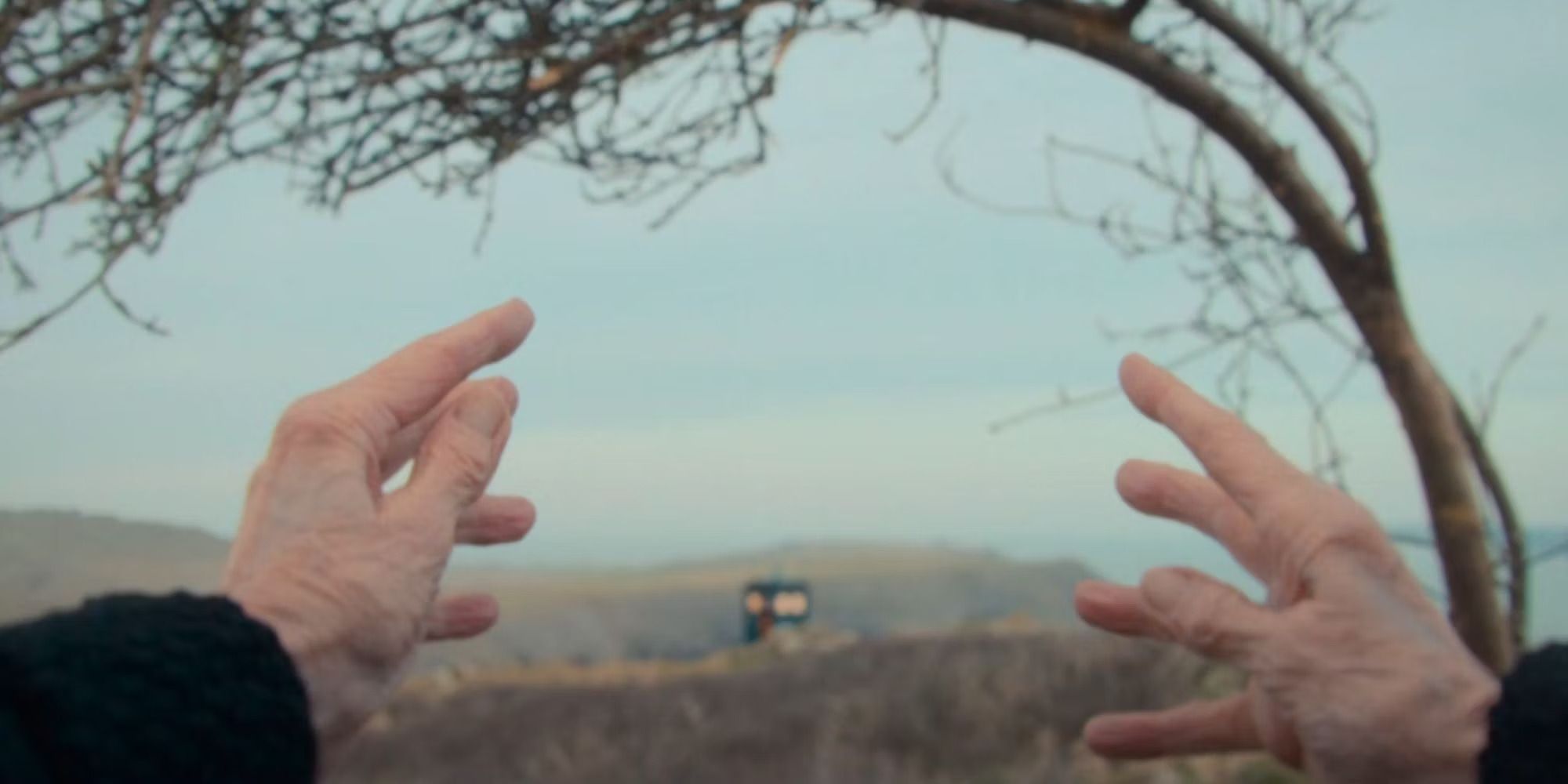
The alternate timeline Ruby experiences in “73 Yards” culminates in her discovery that she was the woman she had been seeing all along. As the elderly Ruby Sunday passes away, she sees the Woman, finally closer than 73 yards away. Ruby then travels back along her own timeline, to the moment the TARDIS arrived in Wales. She tries to call out, warning the Doctor not to step into the fairy circle. Despite her frail voice, too quiet for her younger self or the Doctor to hear, Ruby somehow connects with her younger self, and she stops the Doctor from breaking the circle. This immediately erases the timeline in which the Doctor disappeared.
The older Ruby’s interference in her own past makes her a paradox, preventing the very instance that caused her to exist in the first place. However, there is also evidence that the timeline was changing even before Ruby stopped the Doctor from stepping into the fairy circle. When the older Ruby travels back in time, becoming the woman she had been haunted by, before she can start to intervene, the younger Ruby tells the Doctor she has been to Wales three times. This differs from the first time this moment played out, at the start of the episode, when Ruby told the Doctor she had only been to Wales twice. It is implied that, as the timeline changes to include the Doctor once more, some part of Ruby is able to remember her alternate life. It’s possible that stopping Roger ap Gwilliam, thus keeping “Mad Jack” at bay, earned Ruby her freedom from the fairy circle’s cursed alternate reality.
While the alternate future Ruby appears to have been created and moved back in time to help her past self, her methods seem unusual at a first glance. Everyone she speaks to, she drives away from her own younger self. She also, of course, always maintains a 73-yard distance. This distance seems to hark back to how Doctor Who has portrayed paradoxes and crossed timelines in the past. Episodes such as “Father’s Day” established that it is dangerous for a time traveler to come into contact or directly interact with their own past self. The older Ruby driving people away seemed to be a necessary evil that set Ruby on course to using this power against Roger ap Gwilliam. It’s also possible this was the cursed timeline playing on Ruby’s fear of abandonment, stemming from being abandoned by her birth mother as a baby.

The ending to “73 Yards” does not offer a precise explanation for how Ruby started moving through time to become the Woman, or how she was then able to change her past to avert the creation of this alternate timeline. While this may simply be the powers of the fairy circle, an artifact of superstition built on a barrier between worlds, at play, it’s also possible it had more to do with Ruby herself. Throughout Season 1 of Doctor Who thus far, there have been several hints that Ruby Sunday is more than she appears — she is able to make it snow when her thoughts drift back to the night she was left in the snow by her mother,and she has frequently been at the heart of changing timelines. Doctor Who‘s new era has also introduced a pantheon of gods.
It’s possible that Ruby herself is a member — or descendant — of this pantheon of gods, without knowing it. If so, this could explain the older Ruby traveling back in time and altering her personal history. Perhaps, had anyone else been affected by the fairy circle, they would have been trapped forever in a cursed alternate realm. However, as something with powers from beyond the material universe, Ruby Sunday might have been capable of defying the curse’s powers in order to reinstate her life with the Doctor. As Doctor Who Season 1 moves towards a finale that will resolve the mysteries of Ruby Sunday, definitive answers on what happened in “73 Yards” are sure to be unveiled soon.


